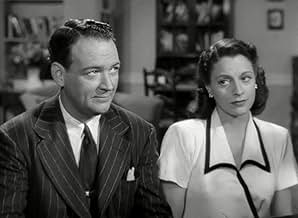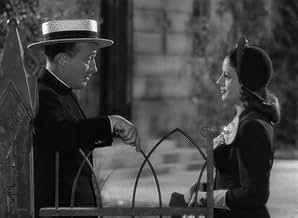Martha Sleeper(1910-1983)
- Actress
- Costume and Wardrobe Department
On stage from the age of seven, Martha Sleeper began on screen in her
early teens as a comic actress for
Hal Roach. After her successful debut in the independently produced farce
The Mailman (1923), she found herself cast in a
series of child comedies with Buddy Messinger and a brace of one- and two-reel shorts opposite
Charley Chase with titles like
All Wet (1924) and
Crazy Like a Fox (1926). Being
voted a WAMPAS Baby Star in 1927 was a further boon to her popularity.
An attempt was made to turn her into an eccentric knockabout comedienne
in the vein of Gale Henry, but this failed to
come off. She was subsequently used in rather more subtle domestic
farce, such as in
Pass the Gravy (1928) , as
Max Davidson's daughter,
frenetically trying to communicate with him by mime. Her last role of
note in silent comedy was as a rather perfunctory leading lady in
Stan Laurel's last solo effort,
Should Tall Men Marry? (1928).
Her contract with Roach was not renewed due to a fiscal downsizing of the company in 1928, so Martha moved over to FBO. This was a Poverty Row outfit that specialized in low-budget features--often westerns--for the Midwest market. No prints of the six films Martha made for FBO are believed to have survived. After 1930, she bounced around among the studios, appearing in supporting roles--often as the "other woman"--in melodramas for MGM, Paramount and RKO. At the same time, growing ever more restless in Hollywood, she sought work on the stage. In an interview, she asserted that she had been given "permission to take jobs in the theater in downtown Los Angeles. That's unheard of, a contract player wanting to have time for stage work" (NY Times, April 7,1983).
In 1936, Martha and her actor-husband Hardie Albright left the West Coast for New York to begin a ten-year run on- and off-Broadway. At the same time she developed a lucrative sideline of designing idiosyncratic costume jewelry, mostly made from bakelite, wood and metal. This blossomed into a respectable $300,000-a-year business and earned Martha the sobriquet of "The Gadget Girl". Her varied creations--including tarantula brooches, necklaces of sun-drenched strawberries and collars of champagne bubbles and swizzle sticks--were hugely popular with the general public, the jet set and film stars like Dolores Del Río and Fay Wray.
In 1949, Martha settled on the island of Puerto Rico, sold her possessions in New York and reinvented herself yet again, as proprietor of a boutique in San Juan, designing and manufacturing fashionable women's clothes. She remained on the island until her retirement in 1969, spending her remaining years on her second husband's plantation near Charleston in South Carolina.
Her contract with Roach was not renewed due to a fiscal downsizing of the company in 1928, so Martha moved over to FBO. This was a Poverty Row outfit that specialized in low-budget features--often westerns--for the Midwest market. No prints of the six films Martha made for FBO are believed to have survived. After 1930, she bounced around among the studios, appearing in supporting roles--often as the "other woman"--in melodramas for MGM, Paramount and RKO. At the same time, growing ever more restless in Hollywood, she sought work on the stage. In an interview, she asserted that she had been given "permission to take jobs in the theater in downtown Los Angeles. That's unheard of, a contract player wanting to have time for stage work" (NY Times, April 7,1983).
In 1936, Martha and her actor-husband Hardie Albright left the West Coast for New York to begin a ten-year run on- and off-Broadway. At the same time she developed a lucrative sideline of designing idiosyncratic costume jewelry, mostly made from bakelite, wood and metal. This blossomed into a respectable $300,000-a-year business and earned Martha the sobriquet of "The Gadget Girl". Her varied creations--including tarantula brooches, necklaces of sun-drenched strawberries and collars of champagne bubbles and swizzle sticks--were hugely popular with the general public, the jet set and film stars like Dolores Del Río and Fay Wray.
In 1949, Martha settled on the island of Puerto Rico, sold her possessions in New York and reinvented herself yet again, as proprietor of a boutique in San Juan, designing and manufacturing fashionable women's clothes. She remained on the island until her retirement in 1969, spending her remaining years on her second husband's plantation near Charleston in South Carolina.

























